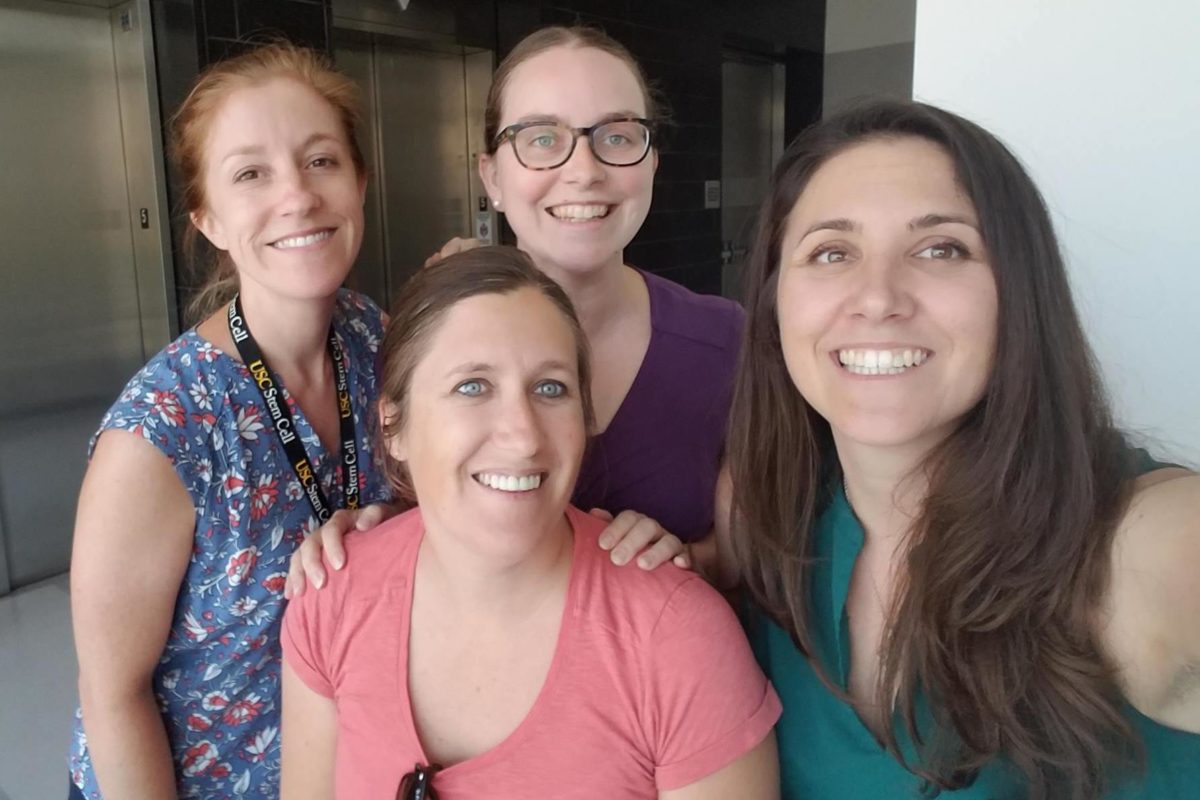
Only 23 percent of biomedical PhD holders eventually land tenure-track faculty positions, according to a report by the National Institutes of Health Biomedical Research Workforce Working Group. Beating these odds, six postdoctoral trainees from USC’s Department of Stem Cell Biology and Regenerative Medicine recently landed coveted jobs as tenure-track assistant professors: Lori O’Brien at the University of North Carolina, Chapel Hill; Michaela Patterson at Medical College of Wisconsin; Lindsey Barske at Cincinnati Children’s Hospital Medical Center; Katie Galloway at the Massachusetts Institute of Technology (MIT); Joanna Smeeton at Columbia University; and Nils Lindström at USC.
Two of these postdocs-turned-professors, Patterson and Barske, took a very proactive approach to ensuring the success of their entire cohort when they designed a formal seminar series called “Preparing for the faculty job market” in 2017. During the series, faculty from USC’s stem cell department volunteered to lead panel discussions, provide feedback on applications, mentor the postdocs, and generally demystify the complex application process of applying for faculty jobs. USC’s Center for Excellence in Research, under the leadership of Dr. Randy Hall, provided funding.“Michaela had this idea that there was all of this resident knowledge in the faculty about how to actually get a faculty job, but the postdocs were isolated from that knowledge. We didn’t know, and they knew. So she and Lindsey organized this series,” said Galloway, who ran the series during its second year with Smeeton.
Lindstrom also participated in the series—which has now expanded to all departments at the Keck School of Medicine of USC under the auspices of the Keck Postdoctoral Advisory Council (KPAC).
“ ‘Preparing for the faculty job market’ has become a centerpiece for professional development in the academic arena for Keck postdocs, part of several offerings developed and implemented by members of KPAC,” said Sarah Hamm-Alvarez, associate dean for basic and translational research at the Keck School of Medicine of USC. “This series was originally part of the vision of a group of postdocs in the Department of Stem Cell Biology and Regenerative Medicine, and launched three years ago. When we were looking to expand postdoctoral offerings on campus within the Keck School Office of Research, we approached these postdoctoral fellows to partner to make the series more broadly available to all Keck postdocs, although stem cell postdocs still play a critical role in its programming and sustainment. This series now attracts postdoctoral fellows broadly across the Keck School, with a robust attendance prompted in large part due to its demonstrated success in aiding stem cell postdocs in securing their first academic positions.”
While the postdocs-turned-professors agree that it was helpful to have this community of support and encouragement at USC’s stem cell research center, they each followed their own individual, independent and completely unique paths to success.
Lori O’Brien
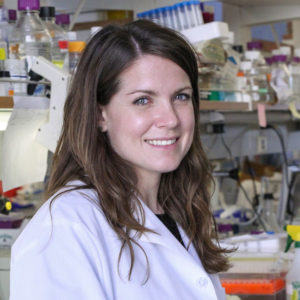 After Lori O’Brien graduated with a bachelor’s degree in bacteriology from the University of Wisconsin-Madison, she was faced with a difficult decision: accept an offer to work at a biotech company in Hawaii, or stay in Wisconsin. She chose Wisconsin.
After Lori O’Brien graduated with a bachelor’s degree in bacteriology from the University of Wisconsin-Madison, she was faced with a difficult decision: accept an offer to work at a biotech company in Hawaii, or stay in Wisconsin. She chose Wisconsin.
“Hawaii would have been a big move,” said O’Brien, who was born in the small town of Oshkosh, Wisconsin. “So I looked into options around the area in Madison and eventually got an offer to work in a laboratory as a research technician.”
Although the job didn’t have the same proximity to the beach, it solidified O’Brien’s interest in academic research and her desire to continue her education at the University of Wisconsin-Madison and earn a PhD in biochemistry.
Her first postdoctoral position finally lured her away from Wisconsin, and she joined the laboratory of Alan Davidson at Massachusetts General Hospital. There, she spent two years studying one of the body’s most complex organs, the kidney, when she learned that the laboratory was moving to New Zealand. Again, she decided to forgo island life and stay put in Boston, where her husband was also pursuing postdoctoral training.
O’Brien continued her kidney research during a second postdoc in the laboratory of Andy McMahon, at Harvard University. When McMahon joined USC as the director of its stem cell research center in 2012, both O’Brien and her husband made the move to Los Angeles as postdocs in his laboratory.
In the McMahon Laboratory, O’Brien and her colleagues authored several studies about the regulation of nephron progenitor cells, the precursor of the kidney’s filtration units. They published their findings in journals including Development, PLoS Genetics, eLife and others.
“For me, my postdocs ended up being about eight years total,” she said. “That’s definitely on the longer end of postdoc time. And you start to wonder if it’s worth it. But it’s good for people to know that even with a long postdoc, you can still get a job!”
Remarkably, before O’Brien sent out a single job application, McMahon recommended her to a colleague, and she received an offer to become an assistant professor at UCLA. Then she heard about an opening at the University of North Carolina, Chapel Hill, sent an application, flew out for an interview, and quickly received a second job offer as an assistant professor in the Department of Cell Biology and Physiology.
“I maybe sent out five real applications,” she said. “So I would say my route was a little more untraditional in terms of job search, because I found people specifically looking for someone working on the kidney.”
She and her husband, who had become parents during their postdocs, decided that North Carolina would be a good place for their family, and also had the advantage of being closer to family in Wisconsin.
She started her laboratory in Fall 2016. While being a principal investigator carries a lot of stressful responsibilities that fall into the realm of running a business, it’s still the science that keeps O’Brien happy and grounded.
“The science comes naturally,” she said. “That’ll always be there. And it’s actually really exciting to be able to now have your own ideas and run with them, and you have this freedom. It really brings a lot of that excitement to the job.”
Michaela Patterson
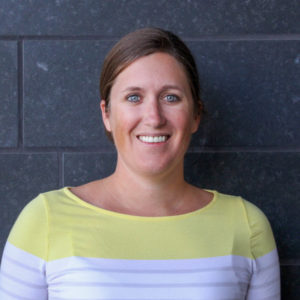 Michaela Patterson started her bachelor’s degree at Bates College, a small liberal arts institution in Maine, with dreams of becoming a bilingual doctor treating patients in both English and Spanish. It wasn’t until her junior year that an elective course in developmental biology altered the trajectory of her entire life.
Michaela Patterson started her bachelor’s degree at Bates College, a small liberal arts institution in Maine, with dreams of becoming a bilingual doctor treating patients in both English and Spanish. It wasn’t until her junior year that an elective course in developmental biology altered the trajectory of her entire life.
“I had this moment that just clicked,” she said. “I much prefer understanding how the human body is built, how the cells differentiate from a single egg to this very complicated system, and the more basic biology. Instead of taking someone’s discoveries and using them to then treat a patient, I wanted to make the discoveries myself.”
After graduating with a double major in biology and Spanish, she was eager to acquire research experience and spent two years as a technician in a Harvard Medical School laboratory that studies Parkinson’s disease and other neurodegenerative diseases.
“I loved it!” she said.
Still entranced by her undergraduate developmental biology course, she decided to return to her home state of California to focus on using stem cells to produce neural cells during her PhD at UCLA. But despite her unflagging passion for scientific research, she quickly developed a case of what she calls “the Classic Imposter Syndrome”—leading her to doubt her chosen path.
The cure to her syndrome was both sudden and unexpected.“Around my fourth year of grad school, I was writing a paper, and I realized that there was a hole in the story,” she said. “So I texted my mentor at the time and said, ‘We should do this additional experiment.’ And he texted back and said, ‘I had the exact same thought today.’ And so it validated for me that I was coming up with the same good ideas as someone that had made it already. I could be a principal investigator if I wanted to. And I didn’t waver again.”
She pursued her postdoctoral training in the laboratory of Henry Sucov in USC’s stem cell research center, where she acquired expertise in both mouse genetics and heart disease. She and her colleagues published a paper in Nature Genetics about the surprising amount of variation in the ability to regenerate damaged tissue after a heart attack. In mice that recover better, the team observed greater numbers of regenerative heart cells, called a mononuclear diploid cardiomyocytes, and lower activity of a gene called Tnni3k.
During her six postdoctoral years, she and her husband also welcomed their first child.
When the time came, she applied to 40 jobs, received three offers, and started her own laboratory as an assistant professor in the Department of Cell Biology, Neurobiology and Anatomy at the Medical College of Wisconsin in fall 2018.
Around the same time, her husband was completing his postdoctoral training at UCLA, and was also offered a position as an assistant professor at the Medical College of Wisconsin in the same department.
When it came to building her new laboratory, “I dove into the deep end,” said Patterson. “I had a technician hired technically before my start date. Now, at almost a year, I have two technicians, a PhD student has joined, and I just hired a postdoc. I’m also rotating students this year. So I feel like I’ve reached critical mass, which is lovely.”
Patterson and her husband also welcomed their second child in January 2019, and moved into a new house in June 2019.
“So we really did try to do it all in one year,” she said. “We just made it work, and we’re super happy and super excited.”
Lindsey Barske
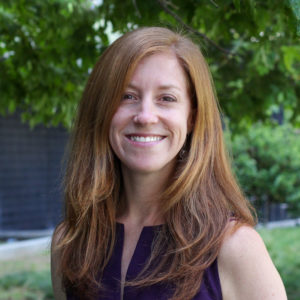 When Lindsey Barske moved to Ohio to accept her new faculty position at Cincinnati Children’s Hospital Medical Center, it was uncharted territory. But it wasn’t the first time she had adopted a new city for the sake of science.
When Lindsey Barske moved to Ohio to accept her new faculty position at Cincinnati Children’s Hospital Medical Center, it was uncharted territory. But it wasn’t the first time she had adopted a new city for the sake of science.
“I talk to people who are my age, who have not moved nearly so many times as an adult or so far away as I have, and I sometimes feel kind of envious!” she said. “Every five or six years, I’ve had to move. That’s long enough in any one of those places to settle down and make good friends and have a community, and then you have to pick up and do it all over again. Cincinnati is not a city I ever expected to end up in, but it’s a good city. I came by myself with my cat.”
Before beginning her peregrinations, Barske started life in a tiny town of 7,000 people in the so-called “Quiet Corner” of Connecticut. Science first summoned her to Claremont, California, where she earned a bachelor’s degree in biology at Pomona College, and spent her summers doing ecological research on Alaska’s North Slope.
After graduation, she remained in the Los Angeles area for two technician jobs: first in the cancer epigenetics laboratory of Peter Jones at the USC Norris Comprehensive Cancer Center, and then in the developmental biology laboratory of Alvaro Sagasti at UCLA.
Her next stop was Durham, North Carolina, where she earned her PhD in developmental and cell biology from Duke University. She researched sex determination and ovary development in mice and turtles with Professor Blanche Capel, and published five first-author manuscripts and three review articles in journals including Nature and Developmental Biology.
“As a grad student even, you become aware of how difficult it is to get a faculty position,” she said. “So I was trying to be comfortable with alternate outcomes, preparing myself like, ‘If I’m not able to get a faculty position some day, I’m still going to be okay. I can still be a scientist.’ ”
During her postdoctoral training in the laboratory of Gage Crump at USC’s stem cell research center, she shifted her focus to craniofacial development and birth defects, but continued her habit of prolific publication. She produced more first-author manuscripts that appeared in PLOS Genetics, Development, and Developmental Cell.
Her hard work earned the NIH Pathway to Independence Award, also called a K99/R00 grant, to facilitate her transition into a faculty position.
“When I found out that I had been awarded the K99, that’s when it first really hit me that I most likely would be able to get a faculty position of the style that I wanted and that I was trained for,” she said. “This grant just changes the game— I knew that it would make me a much more attractive candidate on the job market.”
She applied to approximately 28 positions, received four offers, and accepted a job as an assistant professor in the Division of Human Genetics in the Department of Pediatrics at Cincinnati Children’s Hospital Medical Center.
“I thought the science that was going on here was stellar,” she said. “This is one of the best communities of developmental biologists in the world. And we’re much more integrated with the hospital than anywhere else I’ve worked before. I hear about specific patients every day. A lot of schools will tell you—when they’re trying to recruit you—that they have a lot of collaborations between research and clinical faculty. But here I feel like it’s really, undeniably true.”
In 2018, she started her laboratory, where she continues to research the genes and mechanisms that sculpt the skull.
“There are three people in the laboratory now, plus me,” she said. “I feel very proud and very excited when I see them all working together—like my heart is swelling with happiness, that kind of feeling.”
Katie Galloway
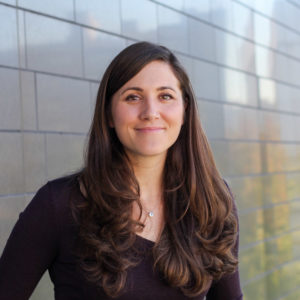 Near the end of her postdoctoral training at USC, Katie Galloway was shopping for plants at Armstrong Garden Center in Los Angeles. Galloway started chatting with a fellow customer, and mentioned her imminent move to Cambridge, Massachusetts, to become a faculty member at MIT.
Near the end of her postdoctoral training at USC, Katie Galloway was shopping for plants at Armstrong Garden Center in Los Angeles. Galloway started chatting with a fellow customer, and mentioned her imminent move to Cambridge, Massachusetts, to become a faculty member at MIT.
“They asked if it was my dream job,” said Galloway, who is the mother of four children. “And I said my dream was always to have kids. I never dreamed I would be able to have family and be a faculty member at MIT.”
Rather than career ambitions, it was intellectual curiosity that drove Galloway to pursue her extensive scientific education and training.
She first earned a bachelor’s degree in chemical engineering at the University of California, Berkeley, where she met her husband at age 18 and got married soon after graduation. She then continued her education as a PhD student at the California Institute of Technology (Caltech), where she first became involved in the field of “synthetic biology,” which involves engineering new biological components or systems. It was during these graduate school years that she and her husband welcomed both a daughter and a son.
“My son was born about three months before I defended my dissertation,” said Galloway.
“And then I didn’t really take that much time off until the paper was submitted. To be honest, when I submitted the paper, I needed a break to think about my next step.”
After some reflection, Galloway decided that there were still ideas that she wanted to explore in academia. In particular, she was fascinated by the stem cell field and wanted to apply her expertise in synthetic biology to mammalian cells.
She took approximately a year off, then began her postdoctoral training in the laboratory of Justin Ichida at USC’s stem cell research center. Galloway made significant research strides while welcoming her third and fourth children.
Along with PhD student Kim Babos Wunder and other colleagues from the Ichida Laboratory, Galloway discovered a strategy for greatly improving cellular reprogramming—the act of changing one cell type into another, which could enable the regeneration of lost tissues and the study of diseases that affect tissues that cannot be biopsied from living patients. The team found the reason why reprogramming is currently extremely inefficient: genetic material gets tangled up. They also found that they can untangle this genetic material using a group of proteins called “topoisomerases”—allowing almost 100 percent of cells to be reprogrammed. They published these finding in the field’s highest profile journal, Cell Stem Cell.
After six years of postdoctoral training, Galloway knew it was time to begin her faculty job search. After applying to 54 jobs and receiving six offers, Galloway accepted a position as a tenure-track assistant professor at MIT in the nation’s top-ranked chemical engineering department by U.S. News & World Report. She started her laboratory in fall 2019.
Still, landing a tenure-track faculty position was never Galloway’s ultimate life dream.
“The idea of committing to going for a tenure-track job is an enormous weight, because it’s so elusive and seemingly unobtainable,” she said. “So I didn’t approach it as, ‘This is my be-all, end-all, and my life will not be complete unless this happens, or that my time as a postdoc will have been a waste.’ My approach was more like, ‘Do great work. If it leads to something, great. And if not, do great work anyway!’ ”
Joanna Smeeton
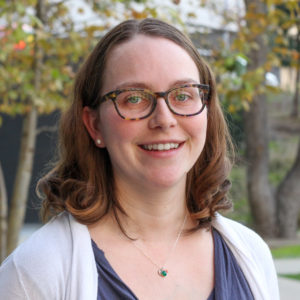 While Joanna Smeeton was writing her PhD dissertation, she was so focused on the science that she didn’t notice when her appendix burst. By the time she checked into the hospital a week later, she needed a two-week course of IV antibiotics, as well as a follow-up surgery, to clear the infection.
While Joanna Smeeton was writing her PhD dissertation, she was so focused on the science that she didn’t notice when her appendix burst. By the time she checked into the hospital a week later, she needed a two-week course of IV antibiotics, as well as a follow-up surgery, to clear the infection.
“At the end of my PhD, I was pretty burnt out and took some time off,” she said. “And then I came back to science and with a renewed vigor!”
Smeeton was always of the mindset that she would pursue academic research “as long as people would let me,” she said. Even as a high school student, she was fascinated by the intricate structures and development of organs. She majored in anatomy and cell biology at McGill University in Montreal, then pursued a PhD focusing on kidney development at Toronto’s Hospital for Sick Children and the University of Toronto.
After completing her PhD and recovering from her burst appendix, Smeeton moved to LA to join her husband, who had been earning his MFA from the Peter Stark Producing Program at the USC School of Cinematic Arts and working in the film industry.
Smeeton’s passion for organ development sparked an increasing interest in organ regeneration, and in the remarkably regenerative zebrafish. So Smeeton decided to pursue postdoctoral training with zebrafish in the laboratory of Gage Crump in USC’s stem cell research center. During her time in the Crump Laboratory, she made the remarkable discovery that zebrafish can develop arthritis in their jaws and fins, and therefore can be used to study the disease. Unlike humans, zebrafish can also recover from arthritis by regenerating their ligaments and cartilage. She, Amjad Askary and their colleagues published these findings in the journal eLife. Soon thereafter, Smeeton earned a prestigious National Institutes of Health (NIH) Pathway to Independence Award to support her transition to starting an independent research laboratory.
During her postdoctoral training, Smeeton also lent her talents as a soprano to the USC University Chorus, and parented twins with her husband.
When the time came to begin her job search, Smeeton was grateful for the inspiration and support of Lindsey Barske and Michaela Patterson, who had already secured their faculty positions during the previous year.
“I feel so lucky that I had this strong group of women supporting me,” said Smeeton. “We had a text group where we were messaging each other about how our job search was going and could ask questions. And it was great just having that support at the push of a button, and I knew they were always going to be there for us, for me.”
Smeeton applied to 31 jobs and received four offers. She accepted a position as an assistant professor in the departments of Rehabilitation and Regenerative Medicine, at Columbia University, and will be a member of the Columbia Stem Cell Initiative in New York City, starting in January 2020.
“It came down to what was going to be the best fit for me and my science at the end of the day, and also what was going to be the best fit for my family,” she said. “Because my husband works in film, being in a major city was a big selling point for all of us. And I really responded well to the people and what they’re building at the Columbia Stem Cell Initiative. There is a vibrant scientific community there, and the potential for collaboration is really exciting.”
Nils Lindström
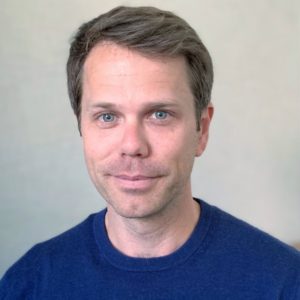 “I’ve known pretty much my whole life, actually, that I wanted to be at the university as faculty, because my father is a professor in social anthropology at the University of Gothenburg in Sweden,” said Nils Lindström.
“I’ve known pretty much my whole life, actually, that I wanted to be at the university as faculty, because my father is a professor in social anthropology at the University of Gothenburg in Sweden,” said Nils Lindström.
Lindström grew up mainly in Tanzania. After attending high school in Tanzania, he moved to Scotland, where he earned his bachelor’s degree and PhD from the University of Edinburgh. He was first drawn to zoology and marine biology, but quickly shifted his focus to developmental biology and genetics with a focus on the kidney. He remained at the University of Edinburgh for three years of postdoctoral training in the laboratory of Professor Peter Hohenstein.
After completing his first postdoctoral position in Scotland, having just published his first major research paper in eLife, Lindström sent an email to Andy McMahon at USC Stem Cell, asking if he had any postdoctoral positions into which he could transition.
“Andy quickly responded and said, ‘Yes. Can you meet me at St. Pancras train station in London in two days? I will be there.’ ”
Lindström took the five-hour train ride from Edinburgh to London, and met McMahon in person for the first time. By the end of the conversation, Lindström had agreed to join the McMahon Laboratory for his second postdoc. “Andy is the top of the field, if you want to do kidney,” said Lindström, “so it was a natural choice.”
In the McMahon Lab, Lindström published four studies in quick succession in the Journal of the American Society of Nephrology and in Developmental Cell. This suite of publications details similarities and differences in kidney development in mice and humans.
After three years in the McMahon Lab, Lindström knew that it was the right time to begin his faculty job search. He applied to approximately 10 jobs and received two offers, including the one that he accepted from USC.
Before starting his USC laboratory in January 2020, Lindström plans to take a sabbatical and spend some time in Edinburgh, volunteering in a laboratory while learning about how DNA is packaged and how this controls gene regulation and other key processes.
“USC’s stem cell research center is very strong in exactly what I want to do,” said Lindström. “Staying close to Andy may to others seem like a challenge, as he casts a big shadow, but at the same time, because we have a very good working relationship, it will be easy to avoid any overlap, and actually just benefit from being near him and the strong kidney research that is growing here. The proximity of very strong developmental biology at USC, Caltech and UCLA makes this a fantastic environment to start a group. And there is also strong research in epigenetics and chromatin structure, something I’m forming a deep interest in. So to me, it feels like USC and its surroundings is a very up-and-coming research environment that will only get stronger with time—something I want to be part of.”
